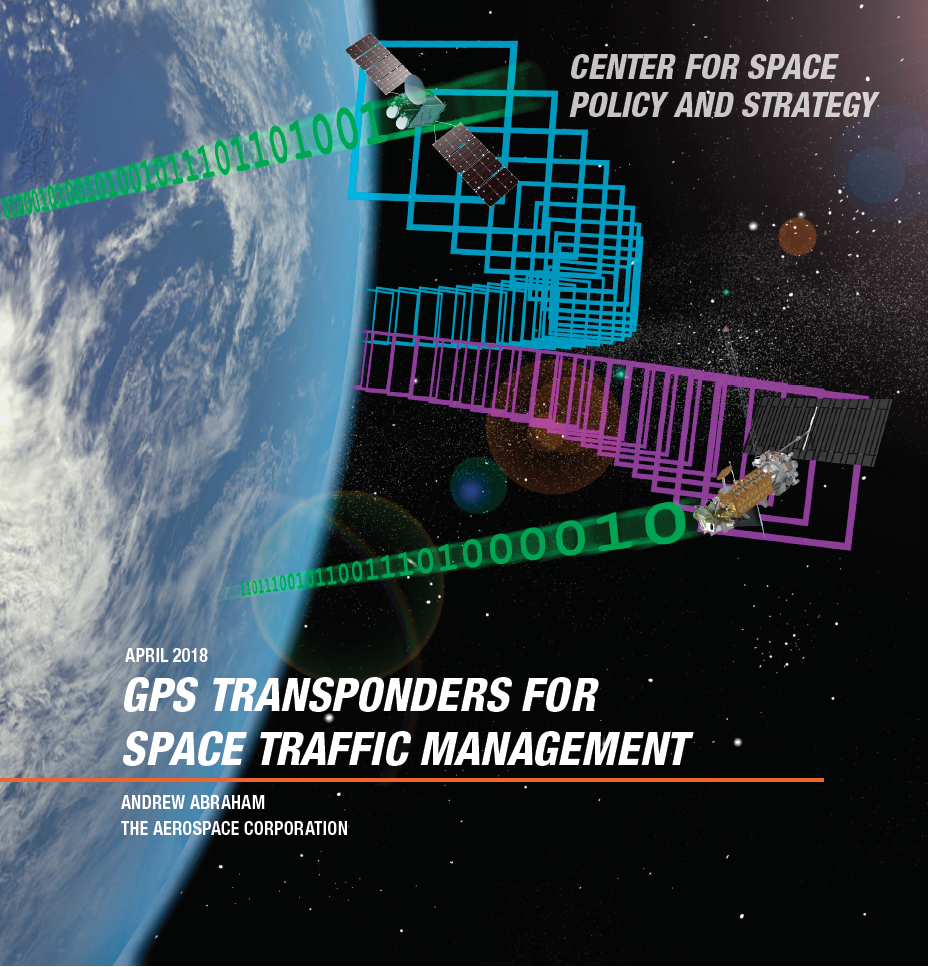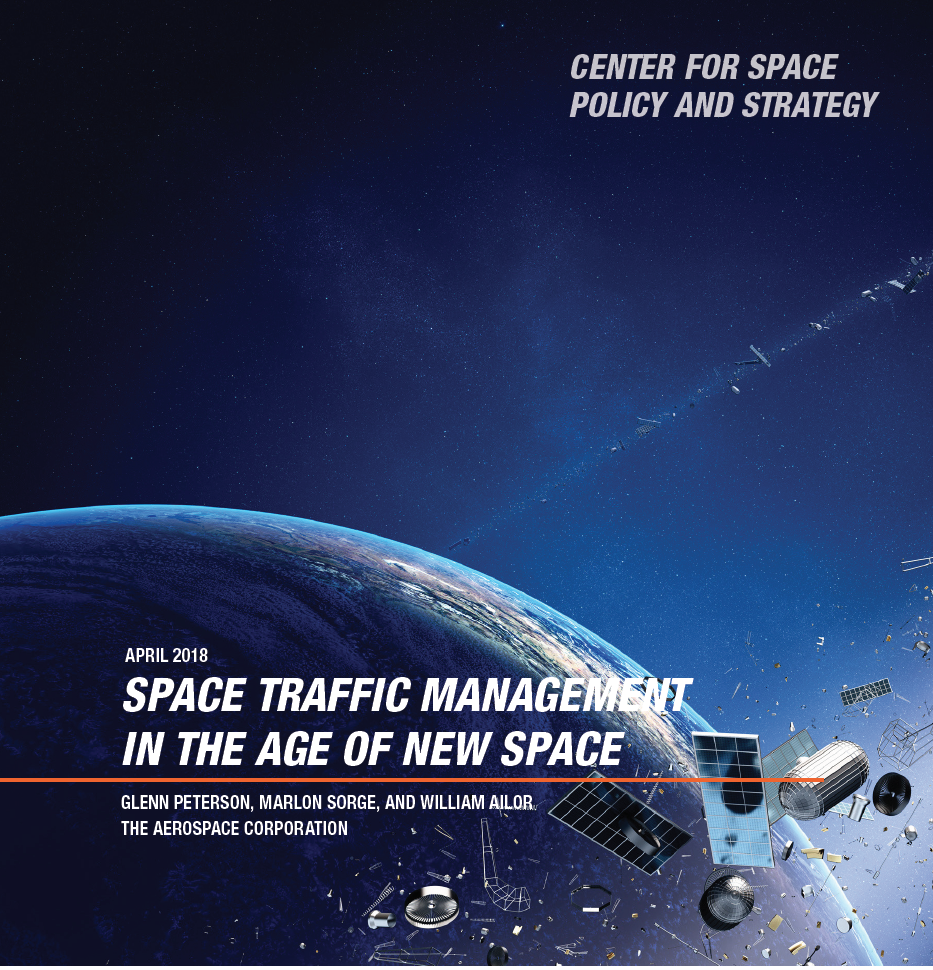
An announcement from the Aerospace Corporation’s Center for Space Policy and Strategy (CSPS) during the Space Symposium reveals the company has released two new policy papers that examine major implications for space traffic management due to the proliferation of small, hard-to-track satellites and plans for vast constellations of small- and medium-sized satellites.
The information made available will help those interested to learn more about the global space traffic management trends, policies, and new technologies designed to encourage responsible behaviors in space. Those reading the paper will get a first look at newly published research from Aerospace experts on GPS transponders in space, space traffic management, remote proximity operations, and much more.
Featured panelists: Dr. Jamie Morin (moderator), executive director, Center for Space Policy and Strategy; Adm. Cecil Haney, USN (Ret.), commander of U.S. Strategic Command, 2013 – 2016, Senior Advisory Council Member, Center for Space Policy and Strategy; Dr. Andrew Abraham, senior member of the technical staff, author of GPS Transponders for Space Traffic Management; Dr. Marlon Sorge, senior project engineer, author of Space Traffic Management in the Age of New Space.

The first paper, GPS Transponders for Space Traffic Management, proposes a radically new way of thinking about space traffic management, based on the use of onboard GPS transponders. These devices could more timely and accurately report a spacecraft’s position than the current decades-old systems that track satellites and other space objects with radar and optical telescopes as part of the DOD Space Surveillance Network. The new proposed system could also provide additional advantages, such as enhancing facilitating proximity operations.
Dr. Andrew Abraham, author and senior member of Aerospace’s technical staff said that GPS transponders could provide positive identification for a spacecraft and allow operators to maintain a lock on it, even when it is thrusting or dead. By providing more-accurate position information, GPS transponders could significantly enhance the ability to compute the probability of collision. There is a margin of error in predicting a satellite's position at any moment; as a result, operators spend a considerable—and growing—amount of time responding to false alarms and planning unnecessary avoidance maneuvers.”
Abraham considers a number of basic factors and requirements on how such a system could work and what trade spaces need to be considered: message formats, operating modes, configuration, ancillary data, and ground architecture. Of course, the success of such a system will ultimately depend on the coordinating authority that could consist of government agencies, civil administrations, commercial entities, or volunteer networks—or any combination of these.
Dr. Jamie Morin, executive director for CSPS said that implementing a space-tracking system based on GPS transponders would take time and major effort, but the benefits from fewer collision avoidance maneuvers and longer satellite lifespans appear to far outweigh the costs. The number of space vehicles and debris objects is expected to increase substantially in the near future, so this is an opportune time to consider a new era of space traffic management.

The second policy paper, New Space Activities: Implications for Space Traffic Management, considers various solutions to the space-traffic problem. These mostly confront the difficult task of minimizing growth in the number of future objects and maximizing the accuracy of orbital predictions. To chart a path forward, Marlon Sorge, senior project engineer for Aerospace’s Space Innovation Directorate and one of the authors, suggests that the space community needs to decide who will be responsible for space traffic management, and what those responsibilities will entail. Satellite operators will also need significantly better space situational awareness.
The authors also suggest that this could be achieved a number of ways: motivating operators to self-report orbital data, attaching tracking aids to spacecraft components, and extending the Space Surveillance Network, as a few examples.
Sorge said that the DOD has been examining this issue for several years, but time is running out. The neighborhood is changing up in space, and planners need to act soon to manage the increased traffic—before on-orbit collisions become commonplace and collision warning alerts become unmanageable.

